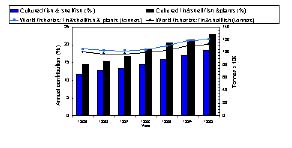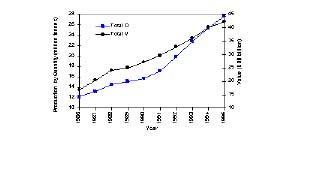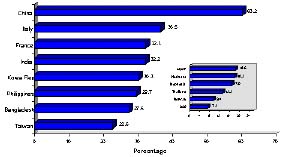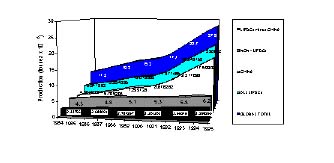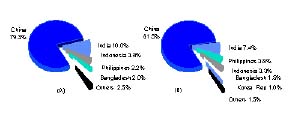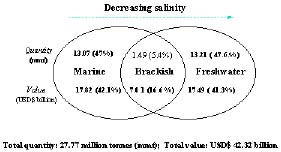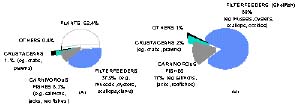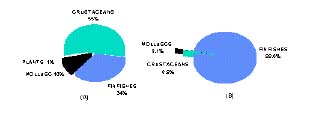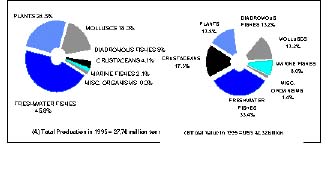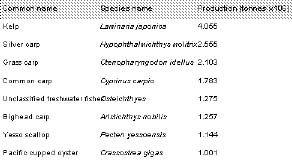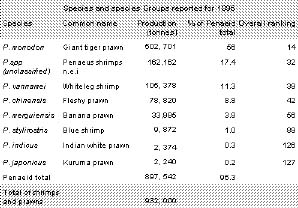Recent Trends in Global
Aquaculture Production : 1984 - 1995
Krishen Rana
Fisheries Information, Data and Statistics Unit
INTRODUCTION
The growth of the aquaculture sector and its potential development, as well as changes in the fisheries sector as a whole, is closely monitored by the Food and Agricultural Organization (FAO), the only international agency to hold a global time series database on aquaculture and capture fisheries.
The potential of aquaculture to meet the challenges of food security and to generate employment and foreign exchange is clearly demonstrated by the rapid expansion of this sector which has grown at an average annual rate of almost 10% since 1984 compared with 3% for livestock meat and 1.6% for capture fisheries production. In the wake of this expansion, however, aquaculture, at times has been equated synonymously as shrimp farming and has recently been given a biased negative press both in peer reviewed articles and the popular press. Consequently, the relative importance and contribution to food security of the over 250 aquatic species farmed globally has been blurred.
What have the major production achievements from aquaculture been in the last few years?
In this commentary, the recent production of the major cultured species and the key features of recent developments in aquaculture production are reviewed to provide an overall perspective, based largely on data provided by countries to FAO.
The Contribution of Aquaculture to Total Aquatic Production
In recent years, the supply of fish has steadily increased and in 1995 total world production of finfish, crustaceans and molluscs from capture fisheries and aquaculture reached 112.9 million tonnes (t). The inclusion of plants to aquatic production raises the total production in 1995 by a further 7.8 million tonnes (t) to 120.7 million t, an increase of around 15.6 million t since 1989 (Figure 1).
Much of the increase in annual global aquatic production, however, is attributable to aquaculture. The actual annual share of aquaculture depends on whether aquatic plants are included or not. For cultured finfish and shellfish the annual contribution to total finfish and shellfish production rose linearly from 11.7% in 1989 to 18.5% in 1995 (Figure 1).
The annual growth rate of cultured finfish and shellfish production over the last 5 years increased from around 5 % over 1990-1991 to
Figure 1. Contribution of aquaculture to annual global aquatic production
Figure 2. Rate of change over previous year
